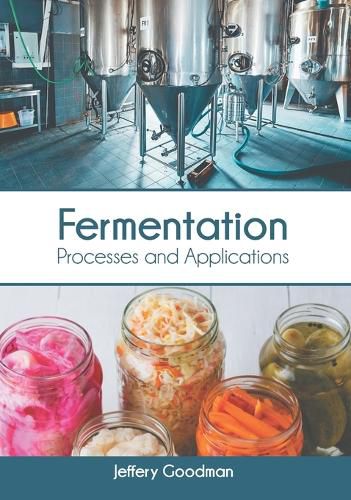Readings Newsletter
Become a Readings Member to make your shopping experience even easier.
Sign in or sign up for free!
You’re not far away from qualifying for FREE standard shipping within Australia
You’ve qualified for FREE standard shipping within Australia
The cart is loading…






Fermentation is a metabolic process in which organisms anaerobically convert starch or sugar to alcohol or an acid releasing energy. The process of fermentation is catalyzed with the help of enzymes. The science of fermentation is known as zymology. The first process of fermentation is the same as cellular respiration, which involves the formation of pyruvic acid by glycolysis where a total of two ATP molecules are synthesized. In the next process, pyruvate is reduced to lactic acid, ethanol or other products resulting in the formation of NAD+, which is re-utilized back in the glycolysis process. Based on the end-product formed, there are four types of fermentation, namely, lactic acid fermentation, alcohol fermentation, acetic acid fermentation, and butyric acid fermentation. Fermentation process is widely used to make products such as wine, beer, biofuels, yoghurt, pickles, bread, sour foods containing lactic acid, etc. The consumption of fermented food can benefit people by making food nutritious, digestible, and flavorful. It also helps in reducing lactose intolerance and improving the immune system. This book outlines the processes and applications of fermentation in detail. It is appropriate for students as well as for experts seeking detailed information in the area of zymology.
$9.00 standard shipping within Australia
FREE standard shipping within Australia for orders over $100.00
Express & International shipping calculated at checkout
Fermentation is a metabolic process in which organisms anaerobically convert starch or sugar to alcohol or an acid releasing energy. The process of fermentation is catalyzed with the help of enzymes. The science of fermentation is known as zymology. The first process of fermentation is the same as cellular respiration, which involves the formation of pyruvic acid by glycolysis where a total of two ATP molecules are synthesized. In the next process, pyruvate is reduced to lactic acid, ethanol or other products resulting in the formation of NAD+, which is re-utilized back in the glycolysis process. Based on the end-product formed, there are four types of fermentation, namely, lactic acid fermentation, alcohol fermentation, acetic acid fermentation, and butyric acid fermentation. Fermentation process is widely used to make products such as wine, beer, biofuels, yoghurt, pickles, bread, sour foods containing lactic acid, etc. The consumption of fermented food can benefit people by making food nutritious, digestible, and flavorful. It also helps in reducing lactose intolerance and improving the immune system. This book outlines the processes and applications of fermentation in detail. It is appropriate for students as well as for experts seeking detailed information in the area of zymology.